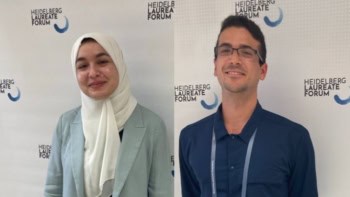
“Ultimately, machines functioning in this way could achieve dynamically changing physical structures – programmable matter – and hence would open up a whole new world of machinery,” suggest the authors of the recent Science Robotics report on robot swarm morphogenesis. The prognosis gives an impressive outlook for a swarm comprised of robots with just three functions: movement, robot-to-robot communication, and a multicolour light-emitting diode (LED) for experimental monitoring. However as is so often the case the sum is much more than the sum of its parts.
Ivica Slavkov, Daniel Carrillo-Zapata work with co-authors in Barcelona in Spain, Bristol in the UK, and Amsterdam in the Netherlands in this latest report. They design swarms of simple “kilobots” so that they can self-organize into simple patterns and shapes not by recognizing and arranging their location according to some top-level master plan, but through local interactions with nearby robots. The approach crops up at many levels in nature from the growth of bacterial colonies, networks of slime mould and alveoli in lungs, to the way fire ants construct bridges.
Although limited to simpler shapes, compared with top-down shape self-assembly there are a number of advantages to this kind of “morphogenesis”. As well as being an emergent, naturally scalable approach, the researchers describe it as “robust to failure of individual agents, and flexible, i.e., exhibiting the type of swarm intelligence seen in natural swarms.” What Slavkov, Carillo-Zapata and team highlight is that by allowing each element a higher degree of autonomy and self-regulation, swarms of self-organizing morphogenetic robots applied to, for example, building construction would be able to respond to changes in their environment and enable self-repair.
A certain degree of freedom
Autonomous self-constructing architecture may be a little way off, but the balance between freedom and control also crops up when engineering machinery with moving parts – you need to allow some freedom of mobility for the machine to function but too much makes the movement hard to govern. As a result engineers tend to favour joints or linkages – assemblies of connected rigid bodies – with just one degree of freedom.
Until recently this left a fairly limited range of linkages at their disposal but by exploring loops of twisted tetrahedra researchers have now unearthed a whole new class of “Möbius kaleidocycles” with the coveted one degree of freedom. As well as the fundamental advances the development poses for understanding the morphologies and mobility of looped linkages and direct applications in robotics, Schönke and Fried suggest the results may point to new organic chemistry.

Twisted linkage geometries hint at new organic chemistry
Governing anisotropy
From tetrahedral loops to tiles, truncated tetrahedral quantum dots prove to be the sought-after building blocks of a single-component colloid that can generate quasicrystalline superlattices (QC-SLs) – a structure of layers of non-periodic but ordered material. The unusual rotational symmetry in the absence of translational periodicity found in quasicrystals has proved an intriguing field of research, earning Dan Shechtman the 2011 Nobel Prize in Chemistry for his first observation of what is now considered to be the signature quasicrystal diffraction pattern.
Computers had predicted the possible bottom-up assembly of QC-SLs generated from single-component colloidal building blocks but experimental realization has proved difficult due to the metastability and high structural complexity in these systems. Rising to the challenge, Ou Chen and colleagues at Brown University in the US, and Max Planck Institute for the Structure and Dynamics of Matter and Heinrich Pette Institute–Leibniz Institute for Experimental Virology in Germany produced truncated tetrahedral quantum dots with different surfactants on different facets. The different surfactants lead to what they describe as “anisotropic patchiness”, which provides the governing hand to coordinate the structure’s assembly. Chen and colleagues also identify a “flexible polygon tiling rule,” which drives the order in the emerging quantum dot arrangement.
“Mechanistic studies demonstrated that the anisotropic surface tethers induced enthalpic patchiness of the TTQDs [truncated tetrahedral quantum dots], which, combined with molecular microscopic environments at the assembly site, were responsible for the 10-fold QC-SL formation,” they report in Science. “Our discovery shows the possibility of creating superstructural materials, otherwise inaccessible through isotropic counterparts, from anisotropic building blocks even without the guidance of a unit cell.”
This flurry of game-changing results based on new morphologies and geometries highlights a useful maxim relevant for any assembly of functional agents. While power is nothing without control, perhaps control functions best with a certain degree of freedom.



